#this is catharsis in its raw state
Explore tagged Tumblr posts
Text






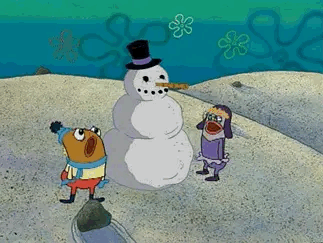
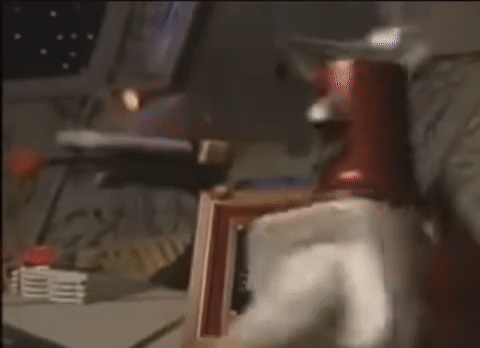
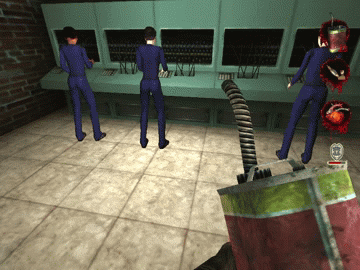
WHAT THE FUCK IS WRONG WITH YOU Moodboard💅🏻✨✨
————————————
X X X
X X X
X X X
#maddie’s stimboards#joke stimboard#violence tw#tw explosives#tw explosion#chaotic#chaos#anger moodboard#gremlin mode#gremlin moodboard#this is catharsis in its raw state#tw murder#tw attempted murder#fire tw#wrath#angy#meme moodboard
50 notes
·
View notes
Text
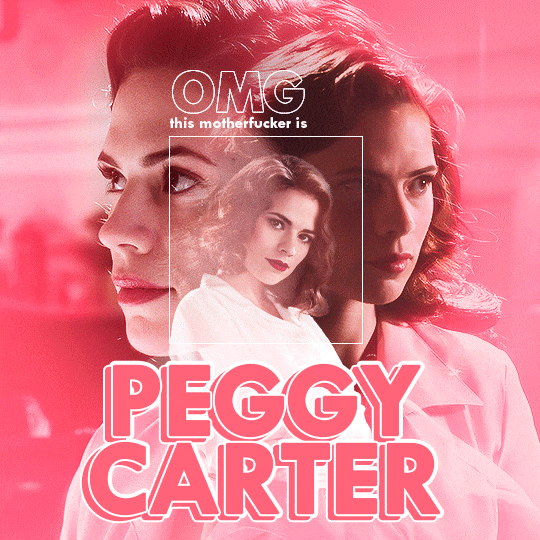
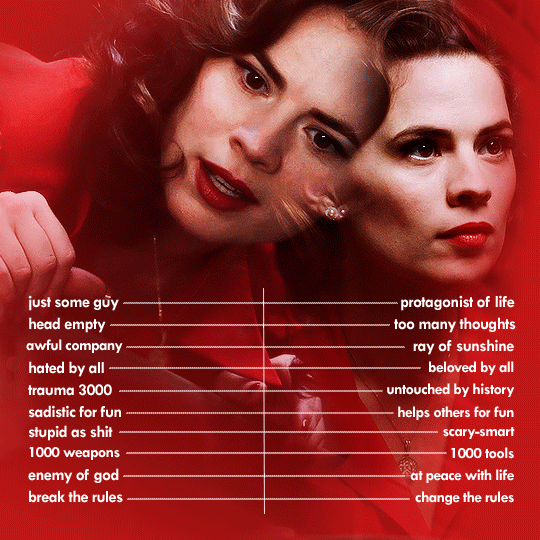
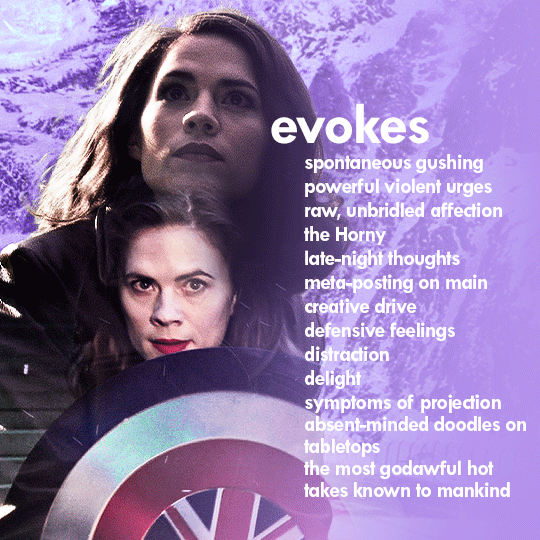
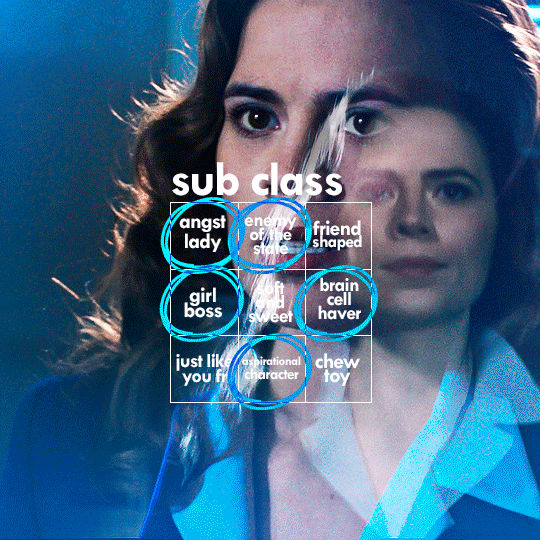
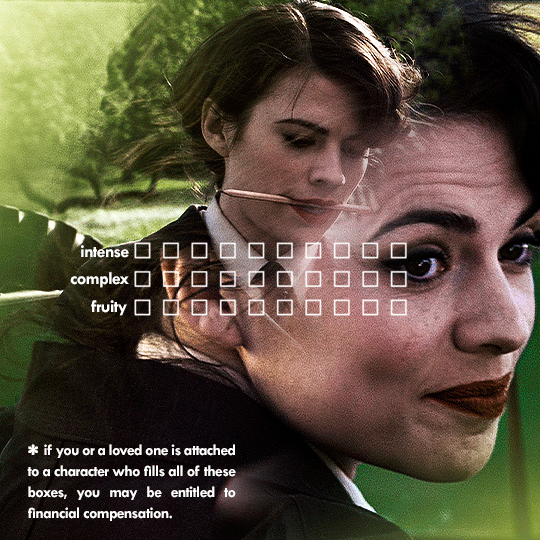


@lgbtqcreators creator bingo 💖 animation.
PEGGY WEEK 2024
day seven — birthday extravaganza 🥳
OMG its Blorbo Bleebus!
[in ● sp] [id under the cut]
gifset about Peggy Carter from the Marvel Cinematic Universe.
gif 1 of 7. two close-up shots of Peggy are blended together. at the middle, there's a static image of Peggy with her arms crossed. the text says, "OMG this motherfucker is Peggy Carter".
gif 2 of 7. two gifs of Peggy are blended together. there are stats bars at the bottom of the gif. the pairings (extremities) are:
just some guy - the protagonist of life head empty - too many thoughts awful company - ray of sunshine hated by all - loved by all trauma 3000 - untouched by history sadistic for fun - helps others for fun stupid as shit - scary-smart 1000 weapons - 1000 tools enemy of god - at peace with life break the rules - change the rules
gif 3 of 7. two shots of Peggy are blended together, one of them being of Captain Carter. the text says, "evokes" and the options are the following:
spontaneous gushing powerful violent urges raw, unbridled affection the horny meta-posting on main creative drive defensive feelings distraction delight symptoms of projection absent-minded doodles on tabletops the most godawful takes known to mankind
all options have a checkmark next to them.
gif 4 of 7. two close-up shots of Peggy are blended together. there's a chart at the center of the gif, titled "subclass". the subclasses are:
angst lady enemy of the state friend shaped girlboss soft and sweet brain cell haver just like you fr aspirational character chew toy
the angst lady, enemy of the state, girlboss, brain cell haver and aspirational character options are marked with a circle.
gif 5 of 7. two shots of Peggy are blended together. at the center of the gif, there are three stats (intense, complex, and fruity) with 10 points each. Peggy has all 30 points. while the intense and complex points are green, the fruity ones have the colors of the bisexual flag (blue, pink, and purple). at the bottom left corner, there's a big asterisk with the following text next to it: if you or a loved one is attached to a character that fills all of these boxes, you may be entitled to financial compensation.
gif 6 of 7. two close-up shots of an animated Peggy are blended together. the text says, "you want them to have...". the list is the following:
a better time less trauma more romance more friends catharsis revenger sympathy a better situation more healing more sex The Realization and a trademark symbol next to it.
all options have a checkmark next to them.
gif 7 of 7. two shots of Peggy are blended together, a close-up and her silhouette entering a room. "select all that apply", the text says. the list is the following:
tragic backstory? orphan? frequently violent? divorced? has enemies? sidekick owner? no friends? pets stray animals? chronic insomniac? murderer?
there's a checkmark next to "tragic backstory", "frequently violent", "has enemies", "sidekick owner", "pets stray animals", and "murderer". each checkmark has a color that corresponds to a small static image at the bottom of the gif. the tragic backstory one is an image of Peggy crying. the frequently violent one is an image of her holding a gun. has enemies: a picture of Dottie. sidekick owner: a picture of her and Jarvis. pets stray animals: a picture of Peggy holding a puppy. murderer: yet another picture of her holding a gun. end ID.
#*#marveledit#peggycarteredit#peggy carter#agent carter#peggyweek2024#marveladdicts#womenofmcu#usergif#ladiesofcinema#femalecharacters#cinemapix#moviegifs#filmgifs#filmtvtoday#fyeahmovies#televisiongifs#cinematv#tvarchive#usertiny#userelysia#userpegs#usereme#userrin#usertreena#userlaro#userarwen#useralien#uservalentina
721 notes
·
View notes
Text
Thoughts on Alien Stage FINAL Round
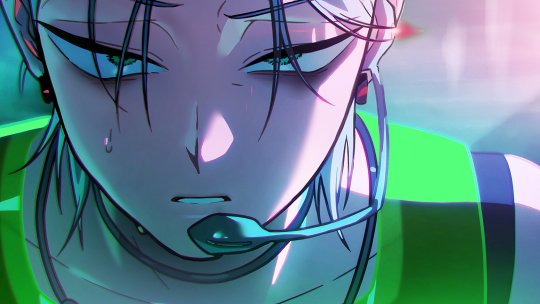
This is gonna be more of a word salad of my raw, biased feelings after watching R7 (with some leftover R6 thoughts) rather than a coherent, comprehensive analysis. Till’s death so far has been the most devastating to me, because I fail to see the meaning or reason behind it, story wise. Sua’s death was a catalyst to shatter Mizi’s rose colored glasses and open her eyes to the cruel reality of their world.
Ivan’s death was the climax of his character arc, both meant to show us his mask finally breaking and a release of his true emotions, and to be a turning point for Till to move forward (I will get back to this). It was also a sobering reminder of the dangerous and unforgiving system the characters live in, shattering the false sense of security built up during All-in and therefore raising the stakes for the upcoming rounds.
Even Hyunwoo’s death had a similar effect as Sua’s on Hyuna. It fundamentally changed her, exposed her to the ugly side of Anakt Garden and Luka’s true nature (also a direct product of said abusive system).
But who or what did Till’s death change? What did it tell the audience that it hadn’t been told before and what purpose did it serve the plot? His death traumatized Mizi and brought her back to reality, but we had seen that before with Sua. It highlighted Luka’s absolute command of the stage, his power-play and the joy he gets out of asserting dominance over his competition; but that point had already been made very clear in R5. He even used the exact same tactic to win.
I love tragedies, and the beauty, the climax of tragedy is the catharsis it provides. It’s defined as “the process of releasing, and thereby providing relief from, strong or repressed emotions”, and this is what R6 managed to accomplish perfectly. Granted it still left me with many unanswered questions, but the purpose was clear.
Till’s death in contrast left me feeling empty. It lacked buildup and catharsis, and in my opinion it stripped the previous round of its initial impact in the overall story (bear with me).
I was excited when I heard about vivimeng’s interview where they stated (very paraphrased) something along the lines of Alien Stage being a story about love and grief, and how the living are affected by those that they have lost.
We see the way the grief of Mizi possibly being dead affects Till to the point he loses the will to keep fighting for survival in R6, and then we see how shocked and horrified he appears while witnessing Ivan’s death, not as a concept or possibility but something tangible happening right in front of his eyes. This sets the audience up to wonder how that grief (and Ivan’s actions) will affect him, how it will make him question his assumptions about Ivan’s goals and intentions, because they were never able to understand each other in life.
And don’t get me wrong, I did love the way his trauma from Ivan’s death was shown in such a raw way in R7, the memories of him filtered crimson red and Ivan’s hypocritical mocking of Sua coming back to bite him, because unlike what he assumed Till did care, so much so that it ironically contributed to his demise.
What I didn’t like was that, because R7 happened immediately after R6, Till never had time to sit with that grief, never even had time to process it. He didn’t get a chance to look past the visceral image of a friend dying in front of him and question why Ivan acted the way he did, why he decided to throw the round. (Even if Luka’s provocation scene still went the exact same way, it would have hit so much harder if we had some context as to why Till’s reaction is so strong to the point of a nosebleed, beyond the obvious shock and stress of a life or death situation.)
I would have loved to see Till do some introspection, even if it concluded in anger, frustration and confusion. And possibly regret, in some form. Regret is an overarching theme in Blink Gone’s lyrics, full of cheerful proclamations of living in the moment and forgetting the burdens of the past, while Till is clearly still haunted by it. And yet, such regret isn’t shown anywhere.
This would have been the perfect moment to learn about Till’s POV of the meteor shower scene. Sure, it was an event that affected Ivan more deeply, but I find it very hard to believe that Till (arguably the one who was tortured the worst being in segyein captivity) doesn’t reminisce about it, doesn’t ponder about what would have happened had he made different choices, especially after Ivan’s death. Even the lyrics of the song “the dark crimson air embraces us, lifting our spirits, and the fiery thrill blazes out to the sky” are a blatant callback to it, so I’m surprised none of it was utilized visually or narratively.
Of course, it’s a short video and perhaps challenging to cram everything into a single round but alas… that wouldn’t have been an issue if Till hadn’t been killed off right away.
Another regret to explore could have been how he was never able to get close to Mizi when he had the chance. He expresses this in his yearbook message to her, and we know he wants to, but his own shyness and perhaps inability to see Mizi eye to eye rather than put her on a pedestal was ultimately his biggest self-imposed obstacle. I would have also loved if Till lived long enough to realize this. Grief (over Ivan and Sua respectively) could have been a vehicle for Till and Mizi to truly connect as friends. I was really looking forward to how their relationship would develop once Till was able to look past his idealized version of Mizi and see how she has grown from that bubbly, sheltered little girl he knew in Anakt. He witnessed some of this in R5, but I don’t think it ever truly sank in.
Overall it was such a missed opportunity to show us Till's perspective and inner world outside of his adoration of Mizi, which is the only POV we ever get from him (I know we might get a comic with his thoughts the same as Ivan and Sua, but this will no longer influence the main story or be acknowledged by the remaining characters either way).
And while the same could be said about Ivan’s character, and I definitely have many questions left about him (which I hoped would be answered via Till), it makes more sense for his POV to be so Till-focused because the nature of his love is obsessive. Through Ivan’s POV we also learn a lot about his inner world, how he sees himself in comparison to others, his self hatred, how his fascination with Till stemmed from finding in him what he thought he himself fundamentally lacked, how he carried a strong desire to connect and be acknowledged by Till but his ability to form attachments in a normal way was stunted from the way he grew up, how he regretted this as an adult, how his near-death experience cemented his masking and complacency as a survival mechanism and how this very thing that helped him survive ultimately kept him isolated, etc etc. A lot was shown about him as a character in two MVs.
And even if Till’s feelings for Mizi had a more innocent, boyish nature (as stated by vivimeng), I would have liked to get a deeper insight into how they began, how and why Mizi became his light and muse and driving force. Of course it’s easy to come to a conclusion, but this is something I wanted to learn from Till himself. There’s also this whole untapped potential and exploration of his most brutal, explosive side, the one capable of turning his former classmate into a sacrificial lamb with zero regret for the sake of expressing his feelings, the one wild enough to risk death or punishment breaking an alien guitar just to get Mizi’s eyes on him. The genius. The mad artist.
There was such a huge buildup of Till being a wild card, the one to finally threaten Luka’s unshakable number one place because of his unpredictability, the one pet to challenge the status quo. I wish the trauma of Ivan’s death had awakened some of that madness, too.
Rather, the progression of his emotional state struck me as a bit confusing (at least before Mizi showed up). Nothing had changed for the better after R6 and on the very contrary, things had just gotten exponentially worse. Not only was Till already in a depressive state over Mizi, he just watched Ivan die, assuming R7 took place only hours after R6. And yet at the start of the MV he appears very much in control and fairly unbothered up until Luka’s taunt throws him off balance and the reality of his weakened mental state comes through.
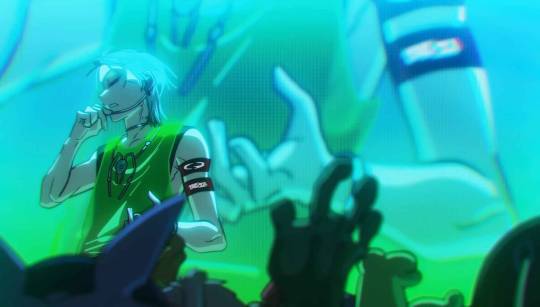


There was no narrative progression to how he went from point A at the end of R6 to point B at the start of R7.
I’m not sure if the intention was to show Till being in denial and trying to drown out his feelings but not only did it not come across as intentional but that would also be such an un-Till thing to do. He’s officially described as the most sensitive and emotional of the cast, and he isn’t good at or I think even capable of masking or hiding his feelings to the degree Ivan does.
It also feels like a step back for Mizi’s character development. She spent weeks (months??) with the rebellion and now knows how to use guns and grenades, what it takes to sneak past security and the risks of being seen. Yet when she reached for Till’s hand in the crowd she was back to R1’s blind optimism, rather than the anxiety she showcased before setting off to the rescue attempt.

Even if she had managed to pull Till off stage before the bullet got him, they would still be alone and unarmed (or not nearly sufficiently armed) in a crowd full of segyein. It was far from a victory yet.
I do LOVE how there was a role reversal though, with Mizi fiercely trying to protect him the way Till spent his whole childhood doing, refusing to leave him behind even if that compromised whatever Hyuna’s main plan was (which has been confirmed NOT to be a rescue mission from the start). I reckon also that she was probably so desperate and relieved to see the last of her friends still standing after losing everyone that for that moment she lost sight of the harsh lessons she had learned previously.
There are many wonderful things about the MV too. The art direction is INSANELY good, the use of the flashing colors of the stage to match with Till’s emotional state, the incorporation of the instruments, the beautiful quality of the animation that keeps getting better with each release, and the way they managed to make it so emotionally gut-wrenching despite the absolute banger that is the song.
I’m glad that Till at least got to die in the arms of someone he loved and felt safe with, being cradled with the gentleness he was deprived of his whole life.
That said, the episode still left me feeling quite empty and disappointed, personally. I’m disappointed that Till’s character was discarded so early. Even if he was to be killed off in the end, I would have wanted them to postpone it a bit longer, give us a bit more time to watch him grow and learn about him and make his death something more meaningful than shocking.
I’m disappointed that his death was the last nail on Ivan’s coffin, because Till was the only other character who could have carried his memory and give the audience a different perspective from Ivan’s extremely black and white, biased one. I’m disappointed that those answers that the audience was eager to learn were just left as a footnote on Patreon, which makes me feel like they never really planned on elaborating on it in the main story. Though who knows, maybe we’ll get a comic or supplemental material in the future.
I know the series is unfinished, and a lot can still change. I’m still deeply invested in finding out what will happen, especially since Hyuna is one of my absolute favorite characters (who now I’m also terrified for).
Many of my opinions may change with the new releases, but this was my impression now, with Blink Gone as a stand alone MV. I also wanna reiterate that I’m extremely biased because Till is a character very dear to me and I feel like he brought so much life and spunk to the story, so it just seems a little bleaker without him in the picture.
To be honest the more I marinate on the thought, the more I’m inclined to believe that Mizi was always intended to be the last one standing, and that the plot just took a turn different than my expectations. Either way I’ll be along for the ride and wait for all new updates on Friday.
I refuse to put on my ‘Till is alive’ tinfoil hat because I just cannot handle more heartbreak, lol. But there was that tidbit of information about Sua having a loyal fanbase demanding her revival, so that tells me it is possible in the ALNST universe. There’s also that ‘joke’ comic on Patreon with Mizi spoiling the whole plot (iykyk). So we might actually get to see at least some attempt at Sua’s revival. Who knows!
Anyways I have yapped even more than I did after R6, so I’ll leave it here. If you made it this far, feel free to share your opinions or predictions!
#alien stage#alnst#에이스테#vivinos#Blink Gone#alnst round 7#even tho im whining so much i wanna clarify i still adore and appreciate all of vivimeng's incredible hardwork and creativity#very curious to know where the story will go from here#and BRACING MYSELF for hyuna vs mizi.... god
37 notes
·
View notes
Text
The Saddest Film Endings
1. The Green Mile (1999)

Directed by Frank Darabont, The Green Mile tells the story of Paul Edgecomb, a death row prison guard, and John Coffey, an innocent man with miraculous healing powers. The film's devastating ending sees Coffey executed despite his innocence, leaving Paul and viewers grappling with the cruelty of humanity.
Why It’s Heartbreaking: Coffey’s death underscores themes of injustice and the fragility of goodness in a flawed world. The emotional weight comes from the bond formed between Coffey and Paul, making his loss feel deeply personal.
2. Grave of the Fireflies (1988)

This animated Japanese film by Isao Takahata depicts the harrowing lives of two siblings struggling to survive during World War II. The ending reveals their ultimate fate in a stark, unflinching portrayal of loss.
Why It’s Heartbreaking: The film’s intimate focus on Seita and Setsuko’s bond makes their tragic deaths feel unavoidable yet profoundly unfair. It’s a sobering reminder of war’s devastating impact on the innocent.
3. Requiem for a Dream (2000)
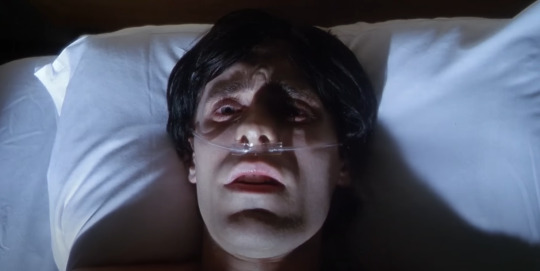
Darren Aronofsky’s grim tale of addiction spiraling out of control leaves every character in a state of utter despair. The final montage shows them broken physically, emotionally, and spiritually, with no hope for redemption.
Why It’s Heartbreaking: The ending offers no catharsis, only a raw portrayal of human suffering. The characters’ descent into their own personal hells leaves a lingering sense of emptiness.
4. Titanic (1997)
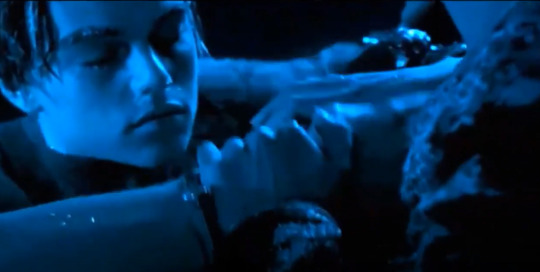
James Cameron’s epic love story culminates in the heartbreaking death of Jack Dawson, who sacrifices himself so Rose can survive. The film’s final moments, showing an elderly Rose reuniting with Jack in the afterlife, cement its emotional impact.
Why It’s Heartbreaking: The loss of young love combined with the massive human tragedy of the Titanic’s sinking creates a dual layer of sorrow that resonates universally.
5. Schindler’s List (1993)

Steven Spielberg’s historical drama ends with Oskar Schindler breaking down as he realizes he could have saved more lives during the Holocaust. The film closes with a powerful scene of Holocaust survivors honoring Schindler’s memory.
Why It’s Heartbreaking: Schindler’s grief and the sheer magnitude of the Holocaust’s horrors leave viewers overwhelmed by the weight of both individual and collective loss.
6. The Boy in the Striped Pajamas (2008)

This World War II drama follows the friendship between a young German boy and a Jewish boy in a concentration camp. The devastating climax sees them both killed in a gas chamber.
Why It’s Heartbreaking: The innocence of the children and the senselessness of their deaths amplify the tragedy of the Holocaust, leaving viewers haunted by its cruelty.
What Makes a Film Ending the Saddest?
A truly heartbreaking ending often includes:
Emotional Investment: Deeply developed characters and relationships make their losses feel personal.
Themes of Injustice or Sacrifice: Unfair outcomes or selfless acts amplify the sorrow.
Lack of Resolution: Films that leave characters or situations unresolved can intensify feelings of grief.
Universal Resonance: Stories that reflect shared human experiences—love, loss, and mortality—leave a lasting impact.
Conclusion
Films like The Green Mile, Grave of the Fireflies, and Schindler’s List consistently stand out for their ability to evoke deep, universal sorrow. Each ending leaves audiences not only mourning the characters but also reflecting on larger themes of humanity, loss, and the fragility of life. The power of these stories lies in their capacity to turn sorrow into a profound, unforgettable experience.
#Saddest Movie Endings#Emotional Movies#Heartbreaking Films#The Green Mile#Grave of the Fireflies#Titanic#Requiem for a Dream#Schindler’s List#The Boy in the Striped Pajamas#Film Analysis#Movie Moments#Movie Lovers#Film Buff#Cinematic Masterpieces#Movie Critique#Heartbreaking Endings#Emotional Cinema#Sad Film Moments#Classic Movies#Movie Recommendations#Iconic Films#Cinephile Community#Film Discussion#Tumblr Movies#Cinematic Feels#Tragic Movie Endings#Oscar-Worthy Films
5 notes
·
View notes
Text
Someone mentioned in the tags of that post the times when it was taboo to write fic treating Dan's depression branding as serious and how those fics actually helped this person come to terms with their own mental health struggles (not adding the tags for privacy) and I think that really exemplifies why all these taboos around fiction are just causing repression and harm.
Others in the fandom have already talked about their experience being fic writers getting bullied off of platforms, and it's something we should hope not to repeat. Fiction is fiction at the end of the day, including rpf. It's meant for just a way to project some story that you want to or need to hear onto some characters. And every story out there, no matter how much you might personally hate it or think it's "romanticising" something awful, it still has an audience of at least one (the author) and possibly many more, for whom that story can work as anything from solace, to a safer way to deal with something that's too scary and intimidating in its real raw form, to much needed catharsis over bad shit happening in someone's life.
Fics on ao3 have tags and ratings, and most authors I've seen post even on tumblr take care to put ratings on them. If you have trouble with any of the tropes or with the sex or the kinks or the dark themes etc etc you can skip out of it, but to go seeking them and then saying "this causes harm to people who don't heed the warnings and still read it" is just being obtuse.
People are talking about how fucked up the wave of 'romanticising depression' was, but too many of us didn't have the language to be allowed to take our struggles seriously. Too many of us were too repressed, or surrounded by people who wouldn't be supportive, and sometimes you need that distance that comes from fiction and exaggerated themes and kind of unrealistic portrayals of mental health issues because that distance enables you to explore something about yourself that's too taboo to even consider outside of depressive jokes and fucked up fiction. Not just mental health either, a ton of horrible inhumane things are very real experiences that people have and they're too taboo to deal with head on for many of us.
Dan talking that openly about not being okay - even if it was framed as a joke - was one of the earliest outlets I had to think upon my own mental state. It's understandable that a lot of people are very uncomfortable with those jokes now, and that people were uncomfortable with certain kinds of fics (and probably still are). But repressing our expression and telling people they can't post something because it makes us uncomfortable is only going to take away some safe options of exploring really tough personal issues that might be the only thing helping someone face their struggles.
If it's not for you, it's not for you. Let's not repeat the mistakes of acting like it's not for anyone and can't help or mean something to anyone at all. Mind the ratings, mind the tags, and as always, mind your business ✌🏻🌸
14 notes
·
View notes
Note
🍀🧠🥊🎓 For Jules, Mauly, and Rory! Just curious about these three!
(Jules is getting his own post since someone else asked about him, so stay tuned. Same twat time, same twat channel)
🍀 - What originally inspired the OC?
Conceptually, both Mauly and Rory are two sides of the same coin. At first I only had Mauly, but I decided to extract a few traits from her and squelch those out into their own character so that her personality wouldn’t feel so totally neutered by incompetence. She’s a little more idealized, whereas Rory is my worst fear of what I could turn out to be, or how other people might perceive me
Mauly is impulsive, brash, self-serving, and arrogant. She’s unapologetically angry, horny, and human. Rory is all of those things, but deeply insecure and constantly overcompensating. He’s pathetic and he makes me sick. Basically he boils down to “sid vicious if he were a bit less of a dick, purely because he’s subdued by cowardice”
Design-wise? Kalos’ rendition of the Punk Guy/Girl trainer class, man. I fell in love instantly. Also this one specific tank girl page:
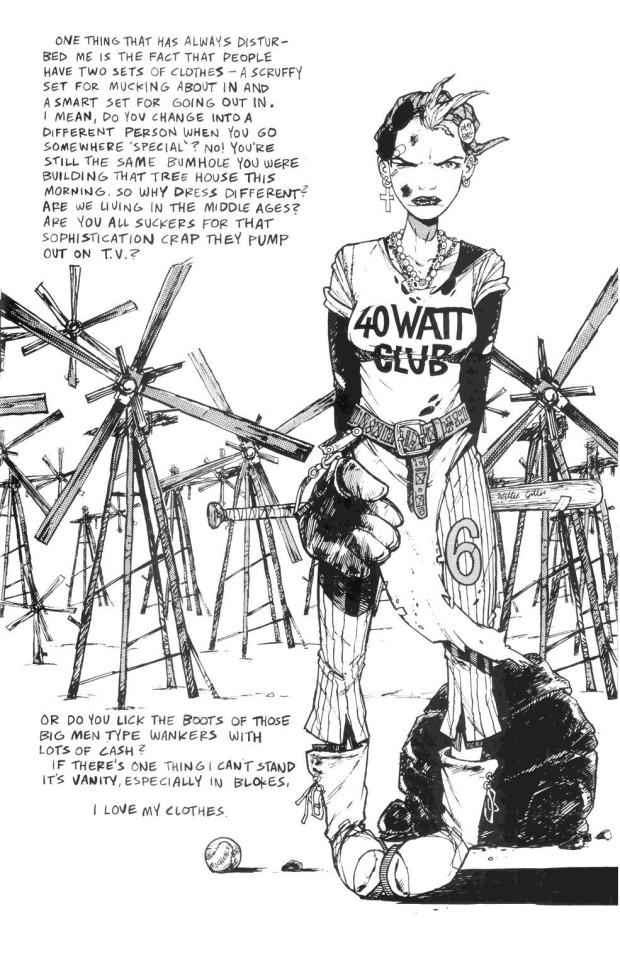
Good shit
🧠 - What do you like most about the OC?
Mauly takes no shit. Sure, that might mean she leaves a bad taste in some people’s mouths, but she knows when she deserves to be treated better. Something I’ve always struggled with has been not standing up for myself because I’m worried it’ll hurt or inconvenience other people. Mauly says fuck those other people, It’s not my job to accommodate anyone else’s existence by minimizing my own. Her whole arc is about self-acceptance through ambivalence. “Even if i don’t love myself, i can’t change who I am. You’re not going to change me either, and you look stupid for trying”
Rory’s best use to me is catharsis. I’ve shoved all the shit I hate about myself into this guy and exaggerated it by queefzillion, and it feels reassuring to see him being knocked down a peg for behaving like a little wart. It also feels kind of nice when he still manages to find occasional kindness in spite of his many, many glaringly hideous flaws.
🥊 - What do they love to do? What do they hate to do?
Mauly was one of those kids who every adult in her life would describe as “so creative” and “a free spirit”, which is actually grown-up code for “this poor bastard’s gonna be a starving artist and we’re hiding our disappointment”. If she had the means to create more often, she’d have a lot of fun honing her craft and fully leaning into art as an outlet for her angst
Because she’s so hands-on and skilled at improvised patching and the like, she often gets stuck with repair responsibilities by the other schmucks she lives with. She doesn’t mind slapping duct tape over stuff several times over or whacking things with a hammer til it fits right, she just would prefer not being assigned that job by other people. Never tell her what to do
Rory’s nimble fingers don’t only make him a passable thief, but also a possibly-not-the-worst musician. He’s never played for anyone else, which might be why he kinda sucks, but it’s one of the few things he keeps to himself instead of bloating to give his delicate ego some padding. His songbook is loaded with edgy cringe, but its the sort of raw soul-bearing stuff that reminds you there’s a person in there. Not a great person, but a person
Anyway something he hates doing is uhhhhhh giving to charity,
🎓- How long have you had the OC?
Mauly’s been around ffffforrrrrr i wanna say maybe two years now? For a long time she was just an idea in my head, i didn’t wanna touch that idea til i knew exactly what i wanted to do with it
Rory’s my freshest OC, only been around for like a month. Not even. Could still use some fine tuning
Bonus: some VERY rough first drafts of Mauly that’re a little closer to the source material (excuse the positively grimy state of the paper, i dont take very good care of my sketchbooks)
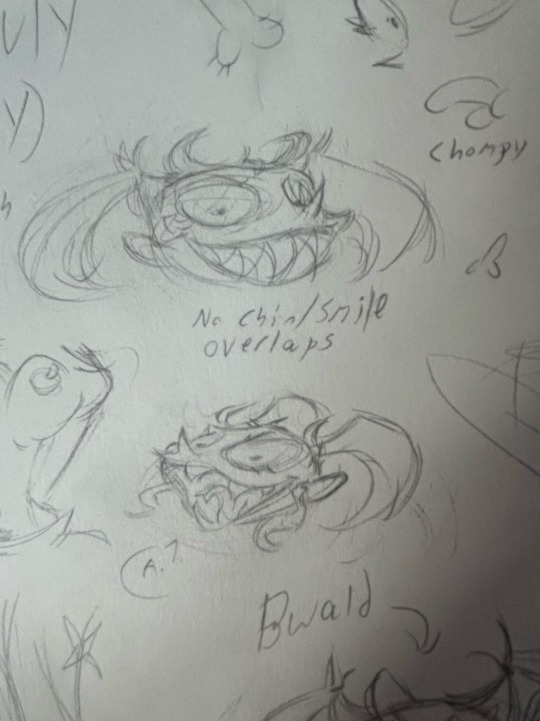

3 notes
·
View notes
Text
Blue Ocean — Fertile State (Slumberland)
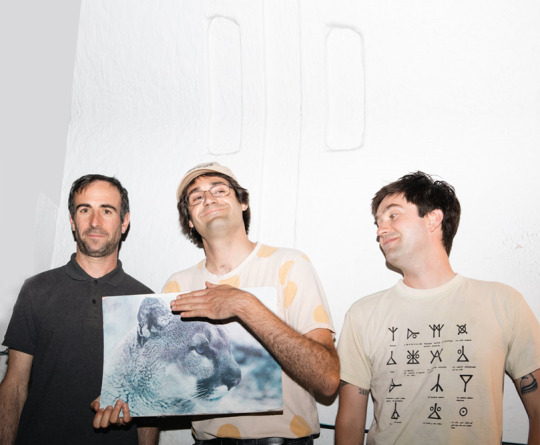
On three previous releases, Oakland, California’s Blue Ocean busted out rollicking lo-fi guitar jams, chugged through chilly post-punk and occasionally clanked and warbled out something a little haunting and more experimental. The sense one got was a band with wide-ranging tastes and the chops to pull them together. Listening back to their 2021 self-titled compilation of EPs, the ability to shift from one reference to another — say Joy Division to Black Tambourine — without sounding derivative is notable. Their proper debut album, Fertile State, takes that dexterity with musical dialects and expands its horizons while retaining a great deal of raw exuberance and, if anything, turning up the volume. Songs alternately rollick, chug and warble here, too, and they’re given the space and higher fidelity to explore an even wider pool of precedents.
But whether they’re rendering scythes of guitar opulent enough to recall Stereolab on the opener, “Ode,” or bringing to mind the buzzy romanticism of The Pains of Being Pure at Heart on songs like “Fertile State” and “Syncnine,” there’s a consistent emphasis on melody under the roar. Knowing how thickly to layer the fuzz over your pop song is not a groundbreaking skill, but it’s no less impressive when musicians successfully pair the beauty and the noise. Fertile State doesn’t lack for examples of this marriage, but two songs stand out. First, “Take a Care,” a jangly guitar gem that wouldn’t sound out of place on a Dick Diver record with its wistful sing-song harmonies and classic Flying Nun-style strumming, and then immediately after on “The Radiant Edge,” which doesn’t match “Take a Care” for catchiness, but outstrips it in grandiose, fist-raising catharsis.
What makes Fertile State not just a satisfying record but an interesting one, however, is that the band doesn’t stop at bright, driving, or even just loud. Scattered across the album’s 41 minutes are several examples of their experimental side. Tracks like “Neutron Mob,” “Sulfur Jacket” and “Deorbit” divert the stream of guitars into post-rock tributaries. Alternately jazzy or industrial bursts of drumming run into rhythmic amp feedback and synth blips. When lyrics do appear, the vocals lurch and gurgle in contrast to the more straightforward songs, where the voice is steady if often shrouded in echo. It’s to Blue Ocean’s credit that these odder excursions weren’t lost in the move to a more generous recording environment and amid a generally more accessible set of songs.
Load Fertile State into your music app of choice and the given genre is “Shoegaze.” With the muted vocals, big opaque drums and waves of dramatic guitar, the shoe fits, so to speak, but a band that has the breadth to convincingly approximate Panda Bear (“Ion Drift”), U2 (“Elude”) or The Jesus & Mary Chain (“Elated Prose”) track-to-track reminds me more, spiritually speaking, of Yo La Tengo than My Bloody Valentine. While that may not bear out sonically (though there are moments, like “Present” where the taut beat, wavering guitar squawks, and sense of loping melancholy sound plucked from Painful) Blue Ocean have a similarly eclectic appetite and a rare aptitude to incorporate the music that seems to inform them into a unique and vibrant sound. Fertile, indeed.
Alex Johnson
4 notes
·
View notes
Text
Catharsis by proxy
Makthaverskan, Grauzone 2023
By Caroline Carr
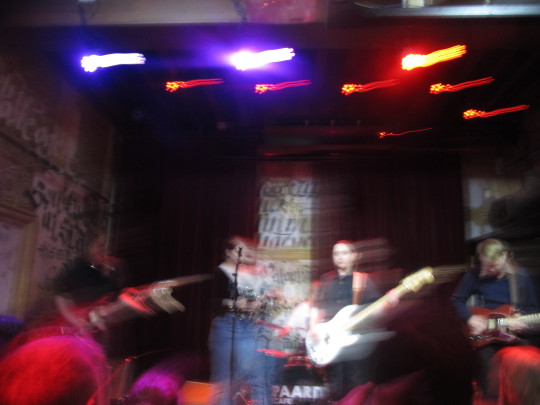
Located 40 miles outside of Amsterdam, the festival began at sundown in Paard, an expansive venue inconspicuously tucked away on a main road in The Hague, Netherlands. Grauzone Festival, a 3-day music and arts event, was celebrating its 10th anniversary beginning on the 10th of February. Though performance art pieces, movie screenings, and live music would go on throughout the early evening, the main event, in my eyes, was not for a few more hours.
A group of now twenty-somethings are laughing in the green room before their performance as they recount the band's origin, as teenagers who met in the schools and skateparks of Gothenburg, Sweden. Since 2009, Makthaverskan has been assembling a cohesive discography that transcends their commonly ascribed genres of post-punk and indie synthpop. Over the last decade, they have managed to maintain a relatively consistent style and distinct sound that is dreamy albeit commanding. “It’s a natural change,” said lead singer Maja Milner. “I’m not 15 anymore, I don’t have the same things to scream about".
The 2021 release, “För Allting,” was the group’s most recent and most polished album yet. With a producer and a more narrative structure, the album was elevated without sacrificing rawness or passion. “We wanted to develop a more coherent album [rather] than a collection of songs,” said bassist Hugo Randulv. Coming in with the neat studio album top of mind, I was eager to see how the group would recreate the power and melodrama of it all onstage.
Below ground, on Paard’s cafe stage, the group transformed the space effortlessly and immediately. An absolute powerhouse, Milner embodied the sentiment of the band’s name which loosely translates to a feminized version of someone who holds power. The performance evoked a hazy dream state, with the atmosphere driven by the synth drawing out Milner’s notes into mystical wails that stick to the walls of the listener’s mind.
Throughout the evening, members’ gazes were fixed on their instruments and each other. Milner spent much of the set facing away from the crowd, singing to her bandmates and hitting a tambourine against her leg. An outside onlooker may have mistaken this as a lack of connection with the crowd, but from where I stood, it was patently more indicative of the bond and history the band shared. The group moved with a seamless cohesion, presumably born out of decades-long friendship, performance, and collaboration.
Though they operated as one, do not mistake their synchronicity for homogeneity. Members have explored outside projects in different styles that bring productive friction to the group’s creative process. “There has to be some tension to it otherwise it wouldn’t be interesting,” said Randulv. With each person contributing different perspectives and specialties, Makthaverskan is a genreless pastiche that synthesizes the best of each member’s musical stylings and lyricism.
Onstage, Milner’s melancholic lyrics hide in plain sight, disguised between drawn-out, siren-like notes that pull you in with their beauty and force you to reckon with the weight of the words. “No matter what I write, it gets melancholic,” said Milner. “I can’t write happy [songs].” From “In my Dreams” to “This Time,” the set brimmed with cathartic autobiographies that lull you into bliss with their melodies and shake you awake with their lyrics.
Even on tracks like “Maktologen” and “Tomorrow” which might strike a passive listener as optimistic with peppy intros, the lyrics are soaked in misery. Tracks like these further the plot of “För Allting” as well as predict the band's general trajectory, respectively. With “Maktologen,” the album ends on a surprisingly high note as the preceding tracks spoke of woes of black-and-white thinking, wasted time, and struggling with others and one’s own selfishness. “Tomorrow” with similar themes, and juxtapositions between lyrics and sound, foreshadows the band’s future projects. If the title did not already give it away, Randulv selected this song that he was specifically happy with that could serve as a compass for the forthcoming album that is still in an early creative stage.
In the interim, the live performance rejuvenated earlier favorites from previous albums and left me with a new top pick: “Outshine.” Compared to the album version that echoed as if it were recorded in a vacant stadium, Milner’s vocals were at the forefront of the live rendition. Her voice, seasoned and matured over the years since the song’s release in 2013, perfectly contrasted with the youthful longing that guided the lyrics. As the evening wrapped up neatly with the yearning belting of “Leda,” a standout from “III,” the room still hummed with the leftover energy and rambunctious audience members reeling from the set. Though the show had ended, the fond memory would linger, keeping me enticed and tuned into whatever might come next for Makthaverskan.
2 notes
·
View notes
Video
Celtic Music: The Spirit Never Dies – Emotional Release & Inner Healing
Embark on a profound and transformative journey with "Celtic Music: The Spirit Never Dies", a video designed to immerse you in the evocative and timeless beauty of Celtic melodies. This captivating audio-visual experience is not just music; it’s an emotional release, a bridge to inner healing, and a connection to the enduring spirit of Celtic tradition.
This meditation invites you to let go and feel life within you and beyond the body. Free yourself from bad things and lighten up in order to feel the energy of life and love in the heart.
A Heartfelt Journey Through Sound From the very first note, the soul-stirring combination of heart-beat-like bass rhythms and enchanting Celtic instruments. Each melody flows like a river of emotion, carrying you through valleys of introspection and peaks of inspiration. The rhythmic heartbeat bass creates a grounding connection, echoing the essence of life itself, while the Celtic harmonies invite you to explore a mystical realm of pure emotion.
The Spirit of Celtic Music Celtic music has always been a vessel for storytelling, evoking the raw, untamed beauty of nature and the strength of the human spirit. The melodies breathe life into ancient traditions, weaving a narrative of resilience, love, and hope. It’s a testament to the enduring power of Celtic culture and its ability to inspire a sense of wonder and unity.
Emotional Release and Inner Healing Music has the unique power to heal, and this collection of Celtic compositions is no exception. The global music is designed to unlock pent-up emotions, allowing you to release tension and find solace. Whether you're seeking comfort, clarity, or a moment of peace, the soothing yet powerful tones offer a safe space for reflection and renewal.
Perfect for Relaxation and Meditation: Let the calming rhythms guide you into a state of deep relaxation or meditation, helping you to reconnect with your inner self.
An Emotional Catharsis: Whether you’re celebrating life’s triumphs or navigating its challenges, this music offers a path to emotional clarity. You may experience various emotional releases. It could be deep, intense joy, warmth throughout your body, a feeling of lightness, euphoria or even tears - don't worry, everything's fine.
A Celebration of Celtic Heritage: Even if you’re new to Celtic music, the universal themes of resilience and love will resonate deeply, connecting you to its timeless spirit.
This video is for anyone who loves music that touches the soul. It’s for dreamers, seekers, and those yearning for a moment of escape or a connection to something greater. Whether you're unwinding after a long day, finding inspiration for creative work, or exploring personal growth, this video will be your guide.
Let the Spirit Never Die As you immerse yourself in the melodies of "Celtic Music: The Spirit Never Dies," allow yourself to feel every note, every rhythm, and every emotion. Let it remind you of the strength within, the beauty of life, and the enduring power of the human spirit. This is more than music—it’s an emotional and spiritual odyssey.
If you start to feel chills running through your body, don't worry and let nature take its course, whatever happens. What may be about to happen is probably a beautiful emotional release.
Let the magic of Celtic music awaken your heart and soul.
Celtic music Emotional release Inner healing Heartbeat bass Relaxing Celtic melodies Spiritual journey Traditional Celtic instruments Calming music Celtic meditation music Emotional healing music Mystic Celtic sounds Soothing Celtic music Celtic culture Ancient Celtic tradition Healing music Stress relief music Celtic instrumental Celtic heart music Music for relaxation Celtic inspiration Emotional journey Nature-inspired music Uplifting Celtic tunes Celtic soul connection Mystical landscapes Celtic heritage Peaceful music for the soul
#CelticMusic #EmotionalRelease #InnerHealing #RelaxingMusic #CelticJourney #HealingVibes #SpiritualMusic #HeartbeatBass #TraditionalCeltic #CelticMeditation #MysticalSounds #StressReliefMusic #SoulfulTunes #SoothingMusic #CelticCulture #AncientTraditions #NatureInspired #PeacefulVibes #EmotionalHealing #RelaxAndHeal #CelticSoul #HealingThroughMusic #TimelessMelodies #CalmingSounds #CelticSpirit
00:00 Celtic Music The Spirit Never Dies Emotionnal Release | Inner Healing 30:00 Celtic Music The Spirit Never Dies Emotionnal Release | Inner Healing 60:00 Celtic Music The Spirit Never Dies Emotionnal Release | Inner Healing 90:00 Celtic Music The Spirit Never Dies Emotionnal Release | Inner Healing
0 notes
Text
The Universal Power of Music: Stories That Resonate
Music has an extraordinary ability to tell stories, evoke emotions, and unite people. It transcends cultural barriers and speaks to the universal human experience. Whether it’s a chart-topping hit or a soothing melody, each song carries its unique essence. This article explores the timeless appeal of some of music’s most memorable creations and their lasting impact.
Backstreet Boys: Icons of Pop Music
The Backstreet Boys are a testament to the enduring power of great music. With a career spanning decades, their hits remain relevant and cherished by fans of all ages. Songs like “I Want It That Way” and “Show Me the Meaning of Being Lonely” encapsulate the emotions of love, longing, and connection.
Rediscover these classics by exploring Backstreet Boys songs. Each track showcases their ability to create timeless music that resonates deeply with listeners.
Eminem’s Artistry: A Voice That Commands Attention
Few artists have had as profound an impact on modern music as Eminem. His ability to fuse raw emotion with lyrical precision sets him apart. Tracks like “Love the Way You Lie” and “Cleanin’ Out My Closet” offer a candid glimpse into his life and struggles, making his music both relatable and unforgettable.
For an overview of his most iconic works, check out Eminem top songs. Each song is a testament to his skill as a wordsmith and his ability to connect with audiences on a personal level.
The Relaxing World of Calming Music
In today’s fast-paced world, the need for relaxation has never been greater. Calming music serves as an antidote to stress, offering a peaceful escape from daily pressures. Whether it’s soft piano melodies or ambient sounds, this genre promotes relaxation and mental clarity.
Discover the therapeutic power of calming music. Perfect for meditation, yoga, or winding down after a long day, these tracks can transform your mental state and enhance your overall well-being.
Finding Meaning in “Good Luck Babe”
“Good Luck Babe” is a song that beautifully captures the emotions of moving forward. Its poignant lyrics tell a story of resilience, love, and personal growth. Whether you’re reflecting on a past relationship or embracing new beginnings, this track offers a sense of catharsis.
Delve into the good luck babe lyrics to experience the depth of its storytelling. The song serves as a reminder of the healing power of music and its ability to connect with our innermost feelings.
The Inspirational Message of Lauren Daigle’s “You Say”
Music has a way of lifting us when we feel down, and Lauren Daigle’s “You Say” is a shining example. Its lyrics inspire confidence, reminding listeners of their worth and potential. This soulful anthem continues to touch hearts and motivate people to believe in themselves.
Explore the you say lauren daigle lyrics to uncover the song’s profound message. It’s a track that speaks to the strength within us all, making it a must-listen for anyone in need of encouragement.
Music’s Role in Storytelling
Beyond its entertainment value, music is a powerful medium for storytelling. From Eminem’s autobiographical raps to the emotional narratives in “Good Luck Babe,” songs serve as snapshots of life experiences. They allow listeners to see the world through the artist’s eyes and feel a connection that transcends words.
This storytelling aspect is what makes music so impactful. Whether you’re revisiting the nostalgic hits of the Backstreet Boys or finding solace in calming music, each song tells a story that resonates on a personal level.
The Science Behind Music and Emotions
Why does music have such a profound effect on our emotions? Neuroscience reveals that listening to music activates multiple areas of the brain, including those responsible for memory and emotion. This is why certain songs can instantly transport us back to specific moments in time, evoking powerful feelings of joy, sadness, or nostalgia.
By exploring a variety of genres and styles, you can curate a playlist that enhances your mood and complements your daily activities. Whether it’s the inspiring lyrics of Lauren Daigle or the relaxing tones of calming music, the right track can make all the difference.
Creating Playlists for Every Occasion
Playlists are a modern way to engage with music. They allow listeners to curate soundtracks tailored to specific activities or moods, from workout anthems to quiet evening tunes. Including a mix of genres ensures a dynamic listening experience that evolves with your needs.
For instance, a playlist featuring Backstreet Boys hits, calming tracks, and Eminem’s energizing songs can provide a perfect balance of nostalgia, relaxation, and motivation. Share your playlist with friends to spread the joy of music and create lasting memories.
Conclusion: The Eternal Allure of Music
Music is a gift that keeps on giving. Its ability to heal, inspire, and connect is unparalleled. Whether you’re captivated by the harmonies of the Backstreet Boys, motivated by Eminem’s verses, or calmed by soothing melodies, there’s a song for every moment of life.
Which songs hold a special meaning for you? Share your favorites in the comments and let’s celebrate the universal power of music. Turn up the volume, and let the melodies take you on a journey of discovery and emotion!
0 notes
Text
Exploring How Music Has Healing Power Through Rap Singers and Lana Del Rey's Hits
Music has long been recognized for its profound ability to heal and transform. Its healing power transcends cultural and linguistic barriers, offering solace, inspiration, and a means of emotional expression for millions around the world. This article delves into how different musical genres, particularly the works of rap singers and Lana Del Rey's popular songs, harness this healing power to impact listeners positively. Additionally, we explore the role of seasonal music and personalized compositions in enhancing the therapeutic effects of music.
The Therapeutic Effects of Music
Music's ability to influence our emotional and psychological states is well-documented. Listening to music can:
Reduce Stress and Anxiety: Calming melodies and rhythms can lower cortisol levels, helping individuals manage stress.
Enhance Mood: Upbeat and energetic tunes can elevate mood and provide a sense of joy and excitement.
Facilitate Emotional Release: Music allows individuals to process and express complex emotions, leading to emotional catharsis.
Improve Cognitive Function: Engaging with music can enhance memory, attention, and other cognitive abilities.
These benefits are achieved through various mechanisms, including the activation of the brain's reward centers, the synchronization of brain waves with musical rhythms, and the stimulation of the limbic system, which governs emotions.
Rap Singers: Storytellers and Emotional Outlets
Rap singers play a crucial role in modern music by serving as storytellers who articulate personal and societal struggles. Their lyrics often address themes such as:
Social Injustice: Highlighting issues like racism, poverty, and inequality.
Personal Struggles: Sharing experiences of mental health challenges, addiction, and resilience.
Empowerment: Encouraging listeners to overcome obstacles and strive for personal growth.
Artists like Kendrick Lamar, J. Cole, and Nicki Minaj use their platforms to convey powerful messages that resonate with listeners. By voicing their experiences and emotions, rap singers create a sense of solidarity and understanding, allowing fans to feel less isolated in their struggles. This connection fosters a therapeutic environment where individuals can find comfort and motivation through music.
Lana Del Rey: Melancholic Melodies and Reflective Narratives
In contrast to the often high-energy and confrontational style of rap, Lana Del Rey's popular songs offer a more subdued and introspective listening experience. Her music is characterized by:
Dreamy Instrumentals: Soft, lush arrangements that create a serene atmosphere.
Lyrical Depth: Themes of love, loss, nostalgia, and identity that encourage deep reflection.
Vocal Emotion: A melancholic and haunting vocal delivery that evokes a wide range of emotions.
Lana Del Rey's songs provide a safe space for listeners to explore their inner emotions and memories. Her ability to convey vulnerability and longing through music helps individuals process complex feelings, contributing to emotional healing and self-understanding.
The Intersection of Rap and Lana Del Rey: A Comprehensive Healing Experience
Combining the raw emotional expression of rap with the contemplative nature of Lana Del Rey's music creates a multifaceted therapeutic experience. This intersection allows listeners to engage with both high-energy and reflective sounds, catering to diverse emotional needs. Whether it's the empowering messages from rap or the soothing melodies from Lana Del Rey, this blend enhances the overall healing power of music by addressing a broader spectrum of emotions and experiences.
Winter Season Songs: Enhancing the Therapeutic Effects
The winter season song plays a significant role in amplifying music's healing power during the colder months. Winter often brings about feelings of introspection, nostalgia, and sometimes loneliness. Seasonal songs can:
Provide Comfort: Familiar tunes can evoke a sense of warmth and security.
Encourage Reflection: Slower tempos and melancholic themes align with the contemplative nature of winter.
Foster Connection: Shared musical experiences can bridge the isolation that sometimes accompanies the season.
Incorporating winter-themed music into one's playlist can enhance the therapeutic benefits of both rap and Lana Del Rey's songs, creating a harmonious blend that supports emotional well-being during the winter months.
Personalized Birthday Songs: A Unique Expression of Care
Creating a birthday song for someone special is a unique way to harness the healing power of music to celebrate and uplift a loved one. Personalized songs can:
Strengthen Bonds: Tailoring a song to an individual's experiences and personality fosters a deeper connection.
Express Emotions: Music allows for the articulation of feelings that might be difficult to convey through words alone.
Create Lasting Memories: A custom song serves as a memorable gift that can be cherished for years to come.
By blending elements from rap and Lana Del Rey's styles, a personalized birthday song can offer both energetic and reflective moments, making the celebration both joyful and meaningful.
Case Studies: Music as a Healing Tool
Rap as a Voice for the Voiceless: Kendrick Lamar's "Alright" has become an anthem for resilience and hope within the Black community, providing comfort and motivation amidst adversity.
Lana Del Rey's Therapeutic Ballads: Songs like "Video Games" and "Summertime Sadness" allow listeners to explore their emotions and memories, facilitating emotional processing and healing.
Winter Playlists: Curated winter playlists that include a mix of rap, Lana Del Rey, and other genres help individuals navigate the emotional landscape of the season, offering both energy and solace as needed.
Personalized Music Therapy: Incorporating personalized songs into music therapy sessions has shown to enhance the therapeutic outcomes for patients dealing with depression, anxiety, and trauma.
The Science Behind Music Therapy
Research in the field of music therapy supports the notion that music can significantly impact mental and emotional health. Studies have shown that:
Music Activates the Brain's Reward System: Dopamine release during music listening promotes feelings of pleasure and satisfaction.
Rhythmic Entrainment: The synchronization of brain waves with musical rhythms can induce states of relaxation or alertness, depending on the tempo.
Emotional Regulation: Music can help regulate emotions by providing an outlet for expression and a means to process feelings.
These scientific insights underscore the effectiveness of integrating various musical styles, such as rap and Lana Del Rey's songs, into therapeutic practices to maximize their healing potential.
Conclusion: Embracing Music's Healing Power
The fusion of rap singers and Lana Del Rey's popular songs exemplifies the diverse ways in which music can heal and transform. By addressing a wide range of emotions and experiences, from the high-energy empowerment of rap to the reflective melancholy of Lana Del Rey, music offers a comprehensive toolkit for emotional and psychological well-being. Incorporating seasonal music and personalized compositions further enhances this healing power, making music an indispensable ally in navigating life's challenges and celebrations alike.
Whether you're seeking comfort during the winter months with a winter season song, celebrating a loved one with a birthday song for someone special, or simply looking to uplift your spirits, the healing power of music is a versatile and accessible resource that can enrich your life in countless ways.
0 notes
Text
The Smashing Pumpkins - Siva (Song Review)
The Smashing Pumpkins, a quintessential band of the 1990s alternative rock scene, are renowned for their ethereal soundscapes and deeply introspective lyrics. Their song "Siva," from their debut album Gish released in 1991, epitomizes their unique blend of heavy guitar riffs, intricate melodies, and poetic lyricism. In this review, we will explore the various facets of "Siva," including its lyrical content, instrumentation, vocal performance, and the overall contextual significance within the band's oeuvre.
Lyrical Analysis
"Siva" opens with an enigmatic verse that immediately establishes a sense of unease and introspection. The lines "I spin off and lose my head / Throwing stray, a spark instead" evoke imagery of disorientation and loss of control. The metaphor of spinning can be interpreted as a reflection of the inner turmoil that often accompanies existential anxiety. The contrast between the chaotic imagery and the desire to "gather strength down in my heel" imbues the song with a sense of resilience amidst confusion. The fresh perspective offered here is crucial; it suggests a struggle to find grounding in a chaotic world, which resonates deeply with listeners.
The pre-chorus—the emotional core of the song—tackles themes of vulnerability and yearning. Lines like "Way down deep and in my heart / Lies a soul that’s torn apart" reveal the profound inner conflict faced by the narrator. The plea for clarity—"Tell me, tell me what you’re after / I just want to get there faster"—creates an urgency that permeates throughout the track. This duality of striving for understanding while grappling with internal turmoil captures a facet of the human experience that is universally relatable.
The chorus, with its rhythmic repetition and contrasting declarations—"I don’t live, I inhale / I don’t give, I unveil"—places the listener in a space of introspection. The stark assertions convey a sense of passive existence, suggesting that the narrator is merely subsisting rather than truly living. The refrain neatly encapsulates a feeling of emotional detachment, making them particularly poignant in the context of disconnection often felt in modern society. The repeated phrases act as mantras of sorts, emphasizing the struggle against, yet resignation to one's current state.
The bridge introduces a stark vulnerability not previously seen in the song. The line "Sprinkle all my kisses on your head / Stars full of wishes fill our beds" juxtaposes sweetness with despair, revealing layers of intimacy shadowed by existential dread. The abrupt “She said, ‘I’m dead’” serves as a jarring punctuation to an otherwise tender moment, summoning an image both tragic and transcendental. This unexpected shift dovetails remarkably with the thematic exploration of love and loss that permeates the song.
Instrumentation and Production
From the outset, the instrumentation in "Siva" is notably rich and layered, featuring a dynamic interplay of guitars, bass, and drums that reflects the emotional intensity of the lyrics. The guitar work, intricate yet aggressive, serves as a linchpin holding the song together. The opening riff is marked by a distorted, almost haunting tone that sets an atmospheric stage, ushering in the listener with an invite to delve into the emotional landscape of the track.
The steady yet pulsing rhythm of the drums instills a sense of propulsion within the music, mirroring the lyrical yearning for swifter resolution of internal conflict. Billy Corgan's guitar solos interspersed throughout the song invoke a sense of catharsis, providing moments where the intensity of emotion erupts and spills over, contributing to an overall feeling of release. The production, supervised by Corgan himself, captures the raw energy of the band's live performances while still managing to create a polished final product.
A noteworthy element is the use of dynamics in the arrangement. There are moments of stark contrast: quiet introspection in the verses transitions into explosive energy during the choruses. This ebb and flow not only holds the listener's attention but also effectively emphasizes the emotional weight of the lyrics. The spontaneous guitar solo acts as a moment of transcendence, a flight from the heartache described, suggesting that while pain is inevitable, release through art is equally paramount.
Vocal Performance
Billy Corgan’s vocal delivery is a critical component of "Siva." His unique voice conveys both fragility and assertiveness, gliding seamlessly between soft, introspective moments and powerful eruptions of emotion. The haunting nature of his tone elevates the lyrical content, providing an ethereal quality that complements the song's introspective themes. The way he enunciates key phrases like "I don’t live, I inhale" imprints them into the listener's memory, creating an impactful resonation.
The contrast in vocal stylings, especially during the bridge and chorus, showcases his versatility as a performer. Corgan employs a quasi-melodic, almost chanting quality that invites engagement, drawing listeners into the emotional depths of the narrative. The incorporation of harmonies and background vocals enhances the textural complexity of the song, allowing for multiple layers of emotional interpretation.
Contextual Significance
"Siva" stands as a hallmark of The Smashing Pumpkins’ early musical identity. It embodies their desire to blend heavy rock elements with lyrical complexity—differences that became defining traits of their later works. Situated within the context of the early 1990s alternative rock movement, the song resonates with the themes of disillusionment and introspection that marked the generation’s artistic ethos.
The broader implications of "Siva" go beyond its personal narrative; it reflects a collective struggle for meaning amidst chaos. This thematic exploration correlates with the era's understanding of mental health, establishing a dialogue surrounding vulnerability and authenticity in art, paving the way towards normalization of such discussions in music.
Conclusion
In conclusion, "Siva" is a masterclass in blending evocative lyrics with compelling instrumentation, all anchored by an emotionally resonant vocal performance. The song encapsulates the tension of existing in a world where disillusionment coexists with moments of beauty and intimacy. Billy Corgan's ability to weave together personal anguish with overarching existential themes makes "Siva" a significant piece not only in the Smashing Pumpkins’ catalog but also within the annals of alternative rock history.
Through elaborate lyrical storytelling, dynamic instrumentation, and poignant vocal execution, "Siva" invites listeners to explore the depths of disconnection and the quest for meaning—a theme that remains as relevant today as it was at the time of its release. It beckons us to confront our inner struggles, yet leaves us breathless, hopeful for a connection that transcends the chaos of existence.
0 notes
Text
Why Do Different Genres Appeal to Different People?
Music is a universal language, but the way we connect with it is deeply personal. Some people might feel an emotional rush from classical symphonies, while others prefer the raw energy of punk rock or the rhythm of hip-hop. The diversity of musical genres is vast, and the reasons why different genres appeal to different people are equally varied. Whether it's due to cultural influences, emotional resonance, or even personal identity, musical preferences reveal a lot about who we are. In this blog post, we'll explore why different genres appeal to different people, using "About Gloria Songs" as an example to show how personal taste in music reflects individual experiences, backgrounds, and emotions.

1. Emotional Resonance: How Music Reflects Feelings
One of the most significant reasons why people are drawn to certain genres is emotional resonance. Different genres evoke different emotions, and people often gravitate toward the types of music that reflect their current feelings or states of mind. For instance, a person going through heartbreak might turn to melancholic ballads, while someone feeling celebratory might prefer upbeat pop or dance music.
Example: "Songs About Gloria"
Imagine "Songs About Gloria" as a soft rock ballad about love and longing. People who have experienced unrequited love or loss might connect deeply with the emotion expressed in the song, making soft rock their go-to genre for emotional release. Conversely, if "Songs About Gloria" were a lively pop anthem about empowerment and moving on, it would appeal to people looking for music that lifts their spirits and makes them feel energized.
Why Emotions Matter
Music taps into our emotional core in a way that few other forms of art can. Different genres serve as emotional outlets for different experiences—jazz might soothe someone after a stressful day, while metal might provide a sense of catharsis for someone dealing with anger. This emotional connection is often the driving force behind why a specific genre resonates with a person.
2. Cultural and Social Influences: The Role of Environment
Our cultural and social environment plays a massive role in shaping our musical tastes. From the music we hear at home to what’s popular in the media, the genres we are exposed to growing up can influence the types of music we enjoy later in life. People from different backgrounds may gravitate towards specific genres because they are familiar, culturally significant, or tied to their identity.
Cultural Context in "Songs About Gloria"
If "Songs About Gloria" is rooted in a particular cultural style—such as Latin rhythms or traditional folk sounds—it could have a special appeal to listeners from those cultural backgrounds. People often feel a deep connection to music that reflects their heritage or cultural identity. For instance, if the song incorporates instruments or melodies commonly found in a listener’s culture, it might feel more relatable and personal to them.
Music and Social Identity
Beyond cultural background, music is also closely tied to social identity. For many, the genre they listen to reflects who they are or the group they associate with. Teenagers drawn to punk music, for example, might connect with its rebellious ethos, while those who love indie folk might identify with the introspective, authentic feel of the genre. The social circles we move in often have shared musical preferences, reinforcing our connection to specific genres.
3. Personal Experiences: Memories and Associations
Personal experiences also shape the music we connect with. A specific genre may remind us of certain periods in our lives, evoking memories tied to those times. This association with past experiences can create a lasting connection to a genre, even as we grow older and our tastes evolve.
Memory Tied to "Songs About Gloria"
Imagine that "Songs About Gloria" was a popular song during someone’s high school years. The nostalgic feelings attached to that time—whether it’s a first love, friendship, or personal growth—would make the song and its genre resonate more deeply. For example, if "Songs About Gloria" were an alternative rock hit, those who grew up listening to that genre during a formative time in their lives might always have a soft spot for alternative rock because of the memories associated with it.
Music as a Time Machine
Songs have the ability to act as time capsules, transporting us back to specific moments in our lives. The genre of music we loved during significant milestones—such as graduation, a first job, or a major move—tends to stick with us because it becomes intertwined with the memories of those experiences. This is why someone might still enjoy the genre they loved as a teenager, even decades later.
4. Personality and Cognitive Styles: Thinking vs. Feeling
Research has shown that our personality and cognitive styles can influence the type of music we prefer. People with different personality traits are often drawn to different genres. For example, those who score higher on openness to new experiences might prefer more complex genres like classical or jazz, while those who seek excitement and energy may enjoy electronic dance music (EDM) or rock.
How Personality Affects "Songs About Gloria"
If "Songs About Gloria" is presented in multiple genres—such as a slow, reflective ballad in one version and an energetic rock anthem in another—it would appeal to different types of people. Those who are introspective and prefer reflective music might connect with the ballad version, while those who seek high-energy music would gravitate toward the rock version.
Cognitive Styles and Music Preferences
People also vary in how they process music. Some enjoy complex, layered compositions found in genres like classical or jazz because they stimulate analytical thinking. Others prefer more emotion-driven genres like pop or R&B, which may focus on the lyrics and overall feel of the song rather than intricate musical structures. This distinction between thinking and feeling styles is another reason why different people are drawn to different genres.
5. Mood Regulation: Using Music for Emotional Balance
Many people use music as a tool for mood regulation. Depending on how they’re feeling or what they want to feel, they may choose a particular genre of music to either match or alter their mood. For example, some might listen to sad songs when they’re feeling down to process their emotions, while others might choose upbeat genres to lift their spirits.
Mood Regulation With "Songs About Gloria"
If "Songs About Gloria" is a calming, acoustic song, it might be used by listeners who want to relax or find peace after a stressful day. Alternatively, if the song is a high-energy dance track, it could appeal to listeners who are looking to energize themselves or boost their mood. People often turn to different genres to achieve specific emotional states, which is why the same person might enjoy vastly different genres depending on the context.
Why Mood Matters
Our mood can influence the types of music we gravitate toward. For instance, someone in a contemplative mood might prefer slower, more reflective genres, while someone in a celebratory mood might seek out energetic music. Music serves as a tool to either enhance or alter our emotional state, which is why we might choose different genres depending on how we feel.
6. Evolution of Musical Taste: Exposure and Exploration
While many people have a preferred genre, musical tastes often evolve over time. Exposure to new genres, whether through friends, travel, or media, can broaden our musical horizons. People who are curious and open-minded may find themselves exploring genres they hadn’t previously enjoyed, expanding their musical preferences.
Evolution of Taste With "Songs About Gloria"
If a listener first encountered "Songs About Gloria" as a pop song but later discovered a jazz cover of it, they might develop an appreciation for jazz that they didn’t have before. As people are exposed to different interpretations of songs or new musical styles, their preferences often expand, allowing them to enjoy a wider range of genres over time.
Why Exposure Is Key
Exposure to different genres can help people discover new musical preferences that they didn’t know they had. Whether it’s through friends, concerts, or media, trying new genres opens up new emotional and intellectual experiences. The more we expose ourselves to different types of music, the more likely we are to expand our tastes.
Conclusion
Different genres appeal to different people because of a combination of emotional resonance, cultural influences, personal experiences, personality traits, and mood regulation. Whether it's a connection to our past, a reflection of our cultural identity, or a way to manage our emotions, music is deeply intertwined with who we are. In the case of "Songs About Gloria," its appeal would vary based on how it resonates emotionally, culturally, or personally with each listener. Ultimately, the diversity of musical tastes is a testament to the rich and complex ways in which music connects to the human experience.
0 notes
Text
Virginia Beach Producer Zurich Releases Dark and Edgy Album "World On Fire"
Zurich, a Virginia Beach-based artist and producer, has recently unveiled his latest album, World On Fire. The summer of 2024 has been a pretty prolific period for the artist, who dropped not one but 3 collections of demos, which have been recorded from 2019 to 2023, prior to releasing "World On Fire" as a full album in August. The demo collections are a very intriguing gateway into the artist's creative approach. While the tracks might be in their raw state or not mastered fully, they still feel very interesting and insightful for people who want to better understand the creative journey that led to "World On Fire" as a coherent, balanced, and accomplished full album release.
Zurich stands out for his modern electronic music with an uncompromising and edgy twist. The artist has a vision to push the envelope and constantly challenge himself and his audience with every new release that he puts out. "World On Fire" happens to be the artist's debut full-length album, excluding the previously released demos, and it features 12 tracks. The instrumental songs showcase the producer's dark, aggressive, and industrial style while also highlighting his goal of not only changing the way people perceive this type of music but also provoking strong reactions from his listeners, such as confusion, and even catharsis.

World On Fire is a testament to Zurich's eclectic production style, blending a variety of influences to create a sound that is both intriguing and versatile. The album's title track stands out as one of the most remarkable compositions. Despite its relatively brief runtime of 2 minutes and 43 seconds, the track packs a huge range of styles and influences. The drum rhythm leans heavily on a modern trap and hip-hop groove, while the synth layers balance melody and ambiance in equal measure. The massive bass further enhances the track's groove, adding weight and depth to the overall sound of the album.
Another highlight of the album is the track "Cashless Society." This song pushes Zurich's aggressive sound to its limits, featuring soaring distorted synth bass and relentless arpeggio patterns that inject motion into the arrangement. The track's intensity reflects Zurich's dedication to pushing the boundaries of electronic music while still maintaining a sense of cohesion and structure.
"What Do You Do When The Whole World Just Falls Apart?" is yet another prominent track characterized by its high energy and dark atmosphere. The song evokes a dystopian vibe, reminiscent of a soundtrack to a John Carpenter movie (If you are a fan of cult flicks such as "Assault On Precinct 13," you probably already understand what I am talking about!" This particular song exemplifies Zurich's ability to fuse raw, saturated industrial sounds with bright, catchy melodies, creating a compelling and complex listening experience. It is safe to say that the producer succeeded in his quest to create music that will impact the audience on a deeper, more visceral level.
Zurich's sound could be compared to that of other boundary-pushing artists such as Machine Girl, LustSickPuppy, and Cabaret Voltaire, only to name a few. In spite of that, his distinct approach to production and composition and his willingness to explore the extremes of electronic music make World On Fire a unique and noteworthy addition to the modern electronic music landscape. With this album, Zurich not only challenges the norms of music production but also invites listeners to embrace the chaos, confusion, and intensity that define his sound.
Overall, what makes this album really special is perhaps its textured aesthetic. World On Fire is a dense and intricate blend of harsh industrial elements and meticulously crafted electronic soundscapes. It is characterized by layers of gritty, distorted synths that clash and intertwine with sharp, unpredictable rhythms, creating a sound that is both abrasive and hypnotic. At the same time, there are plenty of synth lines that you can actually hum along to, as the songs aren't only harsh noise or aggression through and through. The artist definitely managed to conjure up a good and interesting balance of raw outbursts of sonic onslaught and great hooks that won't get out of your head quite so easily. The music on this album is saturated, dirty, and intense, yet it also contains moments of unexpected clarity, where melodic fragments emerge from the chaos, adding depth and complexity to the overall sonic experience. This juxtaposition of harshness and melody gives the album a dynamic, almost tactile quality, making each track feel like a living, breathing entity.
This instrumental release is ultimately highly recommended to people who enjoy electronic music made by artists who think outside the box. Fans of artists such as Aphex Twin, Flying Lotus, Boards Of Canada, or Nosaj Thing should definitely give this one a go.
You can also follow the artist on Instagram
0 notes
Text
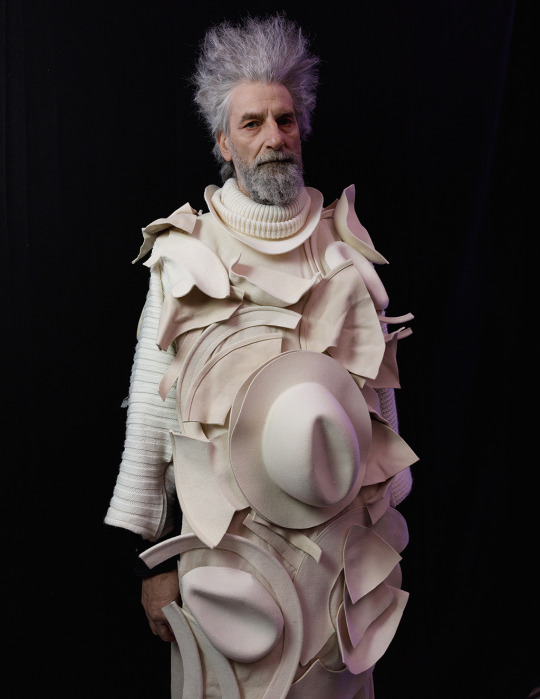
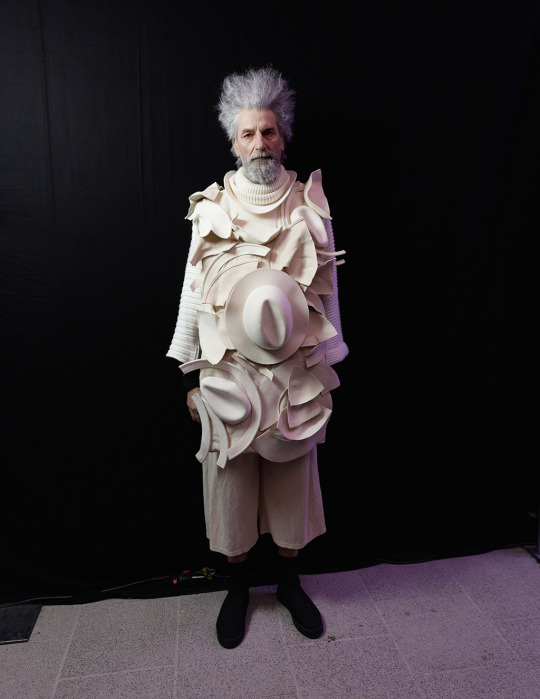
As we navigate through the enigmatic landscapes of DZHUS AW24, we encounter a narrative that speaks to the human condition in its most raw and vulnerable state. The collection serves as a testament to the power of creativity as a transformative force, offering solace and catharsis in the face of adversity.
0 notes
Video
youtube
Listen to this new track by Point of Memory "Most of a Murder" Here’s a quote from the artist! Void Pusher is acoustic computer music; combining digital cut ups and live ambient noise with raw organic qualities. Inaudible super-bass frequencies pumping through a room filled with acoustic instruments and electric guitars set to quaver and rumble sympathetically. Then record the result; a cacophony of resounding snares, harmonizing drones and the subtle rattle of shakers, bells and tambourines. Most of the time you can't hear the bass, just the reactions to it. Sometimes the bass didn't create any rattle at all. By passing the source sounds through amplifiers at their original frequencies and mixing them with their reactive acoustic counterparts, each moment assumes its own physical logic, a sense of movement and consequence, accidentally adhering to Newton's third law of motion: for each action, there is an equal and opposite reaction. The intention behind this project was to create an album that, despite undergoing extensive manipulation, emanates a sense of human warmth and soul. All the source sounds were recorded live or processed through reamplification and manipulated live in a studio setting before being edited at home. The recording sessions took place during spring, summer, winter, and fall, capturing a broad spectrum of moods without deliberately seeking catharsis. The aim was to remain emotionally open and avoid excessive direction, in a superstitious attempt to capture something of the human condition writ large. Rather than pursuing personal emotional release, the goal was to embrace the human experience more generally and avoid individual emotional states. The logic is that creating music that resonates with universal feelings and sentiments is more challenging than producing work that is solely introspective and self-referential. In this way, the artist sought to be a conduit of the human condition rather than a "writer." In both method and aspiration, the artist seeks to listen for what is already transpiring within us, between us, around us, rather than risk drowning it out with an idea of what should be. Unknowable. It is hoped that through Void Pusher, something of the human experience has been captured. --- Point of Memory
0 notes